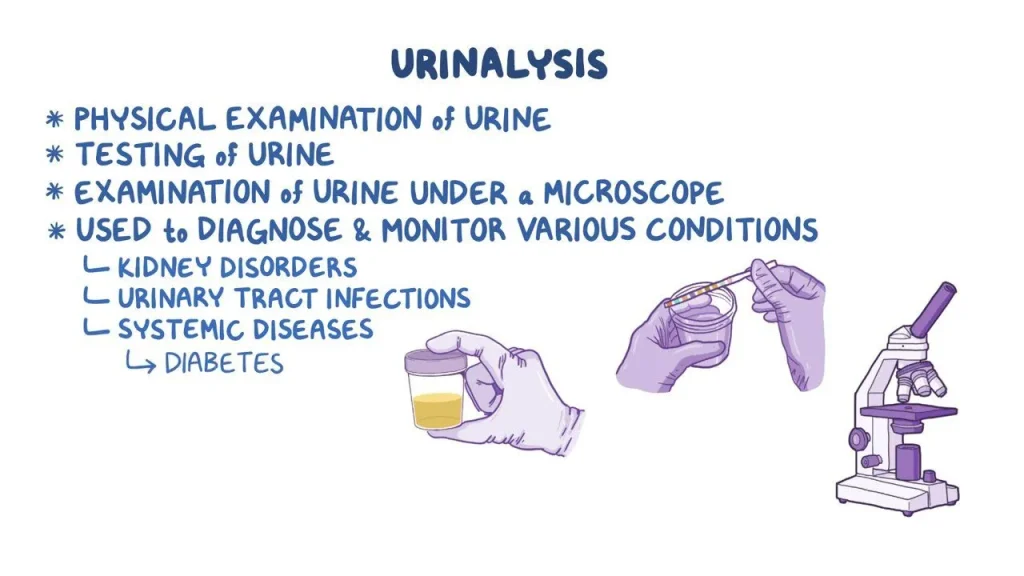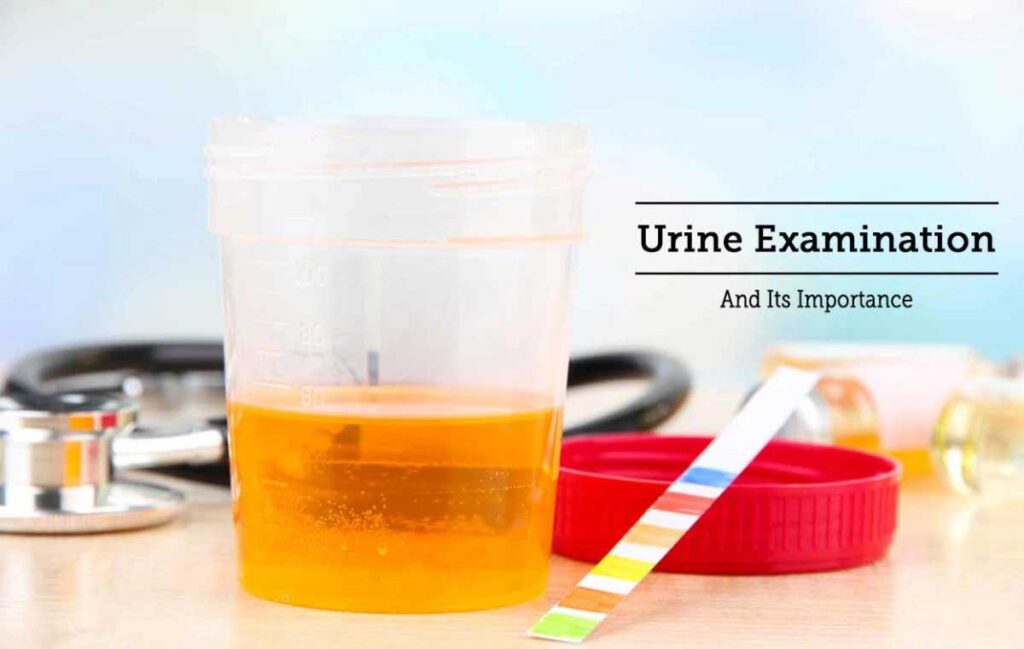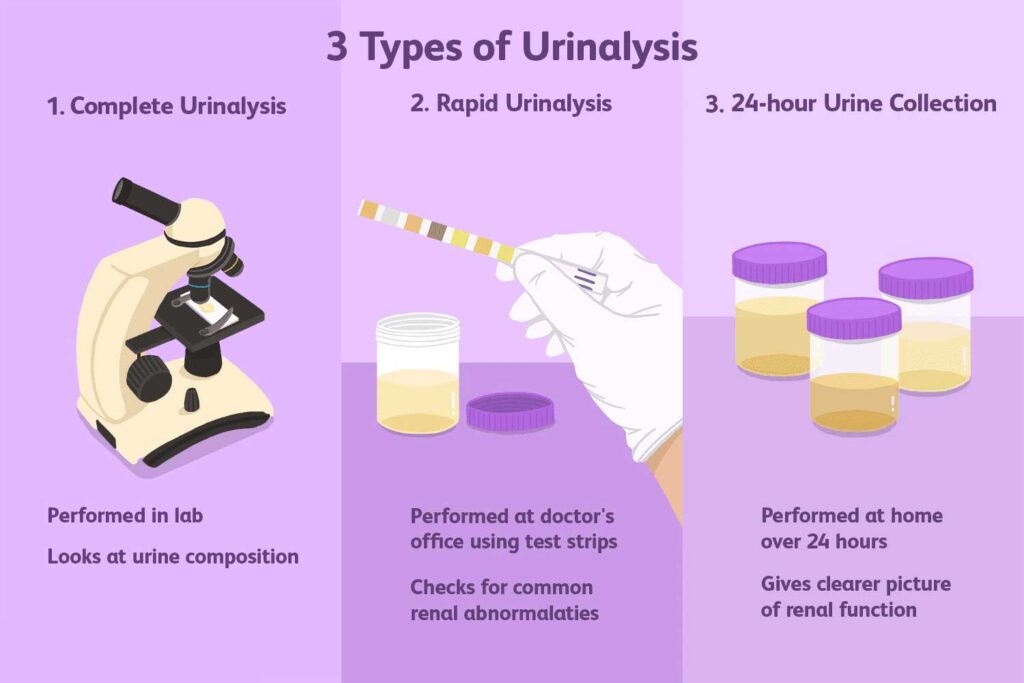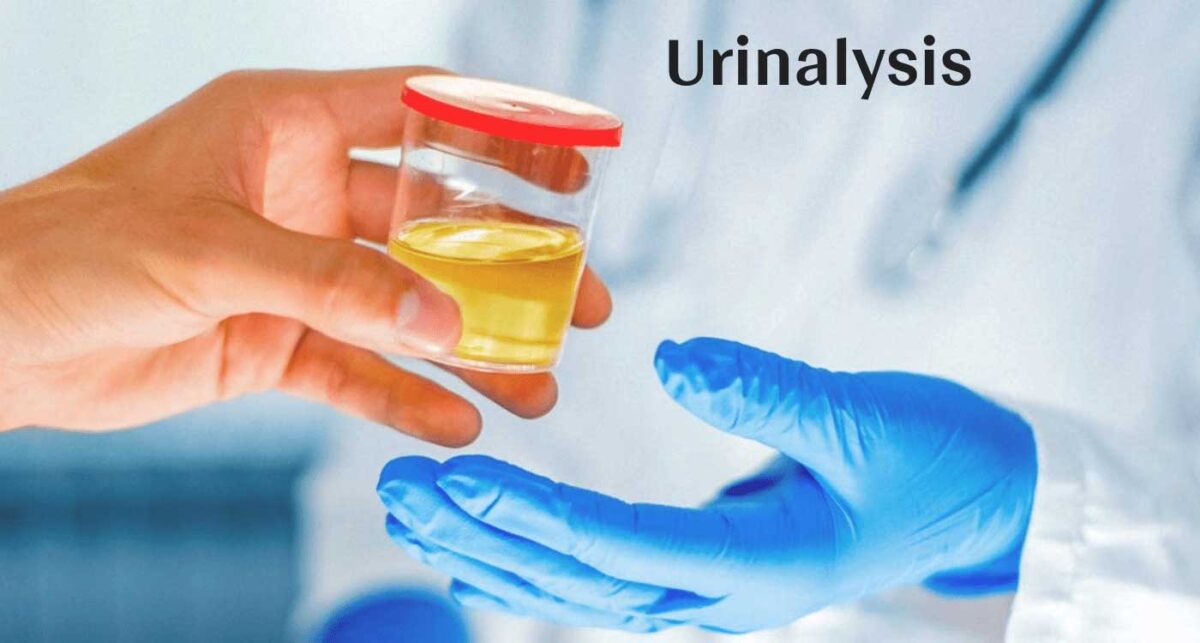
What is Urinalysis?
A urinalysis is a test to test your urine. It is used to detect and manage a wide range of disorders, like urinary tract infections, kidney disease, and diabetes.
A urinalysis includes checking the appearance, concentration, and content of the urine. For example, a urinary tract infection could make urine look cloudy instead of clear. Increased levels of protein in urine could be a sign of kidney disease.
Unusual urinalysis results often require more testing to find the source of the issue.
Why it is done
A urinalysis is a common test that is done for several reasons :-
- To check your overall health :- A urinalysis may be part of a routine medical exam, pregnancy check-up, or pre-surgery preparation. Or it may be used to screen for a variety of disorders, like diabetes, kidney disease, or liver disease, when you are admitted to a hospital.
- To diagnose a medical condition :- A urinalysis may be requested if you have abdominal pain, back pain, frequent or painful urination, blood in your urine, or other urinary problems. A urinalysis could help diagnose the cause of these signs and symptoms.
- To monitor a medical condition :- If you have been diagnosed with a medical condition, like kidney disease or a urinary tract infection, your doctor may recommend testing your urine regularly to monitor your condition and treatment.
Other tests, such as pregnancy testing and drug screenings, may rely on a urine sample, but these tests look for substances that are not included in a typical urinalysis.

Urinalysis Preparation
If you are having only a urinalysis, you could eat and drink before the test. If you are having other tests, you may need to fast before the test. Your health care provider will give you certain instructions.
Many drugs, including non-prescription medications and supplements, could affect the results of a urinalysis. Before a urinalysis, inform your doctor about medications, vitamins, or other supplements you take.
What you can expect
You may collect a urine sample at home or at your health care provider’s office. Providers generally give out containers for urine samples. You may be asked to collect the sample at home first thing in the morning when your urine is more concentrated.
- Clean the urinary opening. Women should spread the labia and cleanse from front to back. Men should wipe off the tip of the penis.
- Begin to urinate in the washroom.
- Pass the collection container in your urine flow.
- Urinate at least one to two ounces (30 to 60 milliliters) into the collection container.
- Finish urinating in the washroom.
- Deliver the sample as instructed by your health care provider.
- If you cannot deliver the sample to the designated area within sixty minutes of collection, refrigerate the sample, unless your provider has told you otherwise.
In some cases, if needed, your provider could insert a thin, flexible tube (catheter) through the urinary tract opening and into the bladder to collect the urine sample.
The urine sample is sent to a laboratory for analysis. You could return to your usual activities immediately.
Urinalysis Results
For a urinalysis, your urine sample is assessed in three ways : visual exam, dipstick test, and microscopic exam.

Visual exam
A laboratory technician examines the urine’s appearance. Urine is generally clear. Cloudiness or an unusual odor could indicate a problem, like an infection. Protein in urine could make it appear foamy.
Blood in the urine could make it look red or brown. Urine color could be influenced by what you have just eaten or by certain drugs you are taking. For example, beets or rhubarb may tint your urine red.
Dipstick test
A dipstick — a thin, plastic stick with strips of chemicals on it — is put into the urine. The chemical strips change color if specific substances are present or if their levels are above typical levels. A dipstick test checks for :-
- Acidity (pH) :- The pH level suggests the amount of acid in urine. The pH level may indicate a kidney or urinary tract disorder.
- Concentration :- A measure of concentration displays how concentrated the particles are in your urine. A higher-than-normal concentration often is a result of not drinking adequate fluids.
- Protein :- Low levels of protein in the urine are typically present. Small increases in protein in the urine usually are not a cause for concern, but larger amounts may indicate a kidney problem.
- Sugar :- The amount of sugar (glucose) in urine is generally too low to be detected. Any detection of sugar on this test generally calls for follow-up testing for diabetes.
- Ketones :- As with sugar, any amount of ketones detected in your urine can be a sign of diabetes and requires follow-up testing.
- Bilirubin :- Bilirubin is the result of red blood cell breakdown. Generally, bilirubin is carried in the blood and passes into your liver, where it is removed and becomes part of the bile. Bilirubin in your urine may suggest liver damage or disease.
- Evidence of infection :- Either nitrites or leukocyte esterase — a product of white blood cells — in your urine may indicate a urinary tract infection.
- Blood :- Blood in your urine needs additional testing. It might be a sign of kidney damage, infection, kidney or bladder stones, kidney or bladder cancer, or blood disorders.
Microscopic exam
Sometimes performed as part of a urinalysis, this test involves viewing drops of concentrated urine — urine that has been spun in a machine — under a microscope. If any of the following levels are above average, you may need more tests :-
- White blood cells (leukocytes) may be an indication of infection.
- Red blood cells (erythrocytes) may be a sign of kidney disease, a blood disorder, or another underlying medical condition, like bladder cancer..
- Bacteria, yeast, or parasites could suggest an infection.
- Casts — tube-shaped proteins — could be a result of kidney disorders.
- Crystals that form from chemicals in the urine may be a sign of kidney stones.
A urinalysis alone generally does not provide a definite diagnosis. Depending on the reason your provider recommended this test, you may need follow-up for unusual results. Evaluation of the urinalysis results with other tests could help your provider determine the next steps.
Getting standard test results from a urinalysis does not guarantee that you are not ill. It might be too early to detect disease or your urine can be too diluted. Inform your provider if you still have signs and symptoms.
For specifics about what your urinalysis results mean, speak with your health care provider.
If you or anyone you know is suffering from disorders like UTI or kidney disease, our expert providers at Texas Specialty Clinic will take care of your health and help you recover.
Call us at (469) 545-9983 to book a telehealth appointment for a home check-up.

